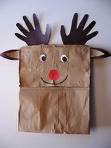Pebbles to Boulders: Inclusion and Adaptation in Little Rocks
Over time, one comes in contact with amazing people and stories. Recently, I have had one of those contacts. I wish to introduce Elisabeth Young-Walker, the newly appointed Adapted Outreach Program Assistant with Curl BC. When dealing with inclusion and adaptation for curling, Elisabeth has some information to share, a story to tell and an exciting news announcement.
Elisabeth says…..
Imagine! You discover a sport that you are successful at; you meet new friends and have a ton of FUN! Now, imagine I tell you that you won’t be able to participate. That sounds disappointing doesn’t it? You would probably want to understand why. For many children with a disability, this is a reality when trying a new sport. Because; the instructor doesn’t think they can teach someone with a disability; because the child can’t access the facility; because there isn’t a local program dedicated to children with a disability, and the list goes on.
Let’s explore methods to successful inclusion:¬
• Attitude can mean everything and first impressions resonate even with young children. Be welcoming and avoid the “deer in the headlights” look, even if you are unsure about teaching a child with a disability.
• Let the child explore options and movements. A child with a disability in a supportive environment might often be able to sort out a technique that works for them.
• Acknowledge that “traditional” forms and technique might not be achievable.
• Set similar goals for the child with a disability.
• If the child needs additional assistance, set up a buddy system. Pairing them with someone other than their sibling might promote relationship building and give the sibling a break. However, the sibling match might be more comforting. Feel it out!
• Children are amazing and don’t see difference the same way many grown-ups do. You may see little leaders emerge!
• If you are aware of a child with a disability interested in joining your program, talk to their parents/guardians, meet with the child, and find out what they like/dislike about Phys. Ed.
• Have a push stick, some dynabands or velcro and a chair (can be used for someone with reduced balance) on hand to help with ad hoc adaptation needs. Have a local carpenter build a ramp to ensure a wheelchair user can access the ice independently.
Consider this true story:
Some time ago a 5 year old boy with a congenital (from birth) disability affecting his hands and arms was in kindergarten class making reindeer puppets. The task was to trace one’s hands, in turn making them the reindeer antlers. The little boy figured out the fine motor skills needed to accomplish this and set into the project. He wasn’t bothered at the fact that his pair of antlers would have 4 prongs instead of 10 like everyone else’s. Upon catching a glimpse of how different his antlers were going to be, the teacher scrapped his first version of antlers and replaced them a with a traced pair of her hands.
Remember children with a disability are individual and unique too. If one Little Rocker who uses a wheelchair likes to use a push stick, the next one you meet might not. In the case of the little boy and the reindeer puppet, he was comfortable figuring it out on his own and wasn’t fazed by being different. As a teacher in this or a similar setting, let him continue, unless he is causing physical harm to himself.
Inclusion isn’t easy and doesn’t come naturally to everyone. But, it is easier than many might think. Be creative and flexible, ask questions and have fun!
Curl BC is currently developing an adaptive program to get children with disabilities involved in curling. Their goal is to promote the sport through fun games and not focus solely on wheelchair curling, but curling for all. This program will be facilitated in a gym but many of the concepts can be adopted for on-ice play. Stay tuned to Curl BC for updates as their program launches within in the next couple months.
Elisabeth Walker-Young is developing and delivering the Curl BC adaptive outreach program, which hopes to reach 50 to 70 children and youth this year. A retired Paralympian with a background in adaptive sport and sport administration, she strives to increase awareness and opportunities so that one day others may follow in her footsteps; whether it is by pursuing an active life or achieving success at the international level. For more details about the program or if you have a fun title for the program, please contact her directly at [email protected] 




